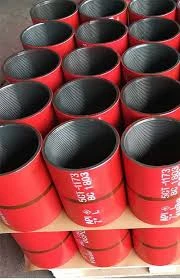- Afrikaans
- Albanian
- Amharic
- Arabic
- Armenian
- Azerbaijani
- Basque
- Belarusian
- Bengali
- Bosnian
- Bulgarian
- Catalan
- Cebuano
- Corsican
- Croatian
- Czech
- Danish
- Dutch
- English
- Esperanto
- Estonian
- Finnish
- French
- Frisian
- Galician
- Georgian
- German
- Greek
- Gujarati
- Haitian Creole
- hausa
- hawaiian
- Hebrew
- Hindi
- Miao
- Hungarian
- Icelandic
- igbo
- Indonesian
- irish
- Italian
- Japanese
- Javanese
- Kannada
- kazakh
- Khmer
- Rwandese
- Korean
- Kurdish
- Kyrgyz
- Lao
- Latin
- Latvian
- Lithuanian
- Luxembourgish
- Macedonian
- Malgashi
- Malay
- Malayalam
- Maltese
- Maori
- Marathi
- Mongolian
- Myanmar
- Nepali
- Norwegian
- Norwegian
- Occitan
- Pashto
- Persian
- Polish
- Portuguese
- Punjabi
- Romanian
- Russian
- Samoan
- Scottish Gaelic
- Serbian
- Sesotho
- Shona
- Sindhi
- Sinhala
- Slovak
- Slovenian
- Somali
- Spanish
- Sundanese
- Swahili
- Swedish
- Tagalog
- Tajik
- Tamil
- Tatar
- Telugu
- Thai
- Turkish
- Turkmen
- Ukrainian
- Urdu
- Uighur
- Uzbek
- Vietnamese
- Welsh
- Bantu
- Yiddish
- Yoruba
- Zulu
seamless pipe
Seamless Pipes The Backbone of Modern Infrastructure
In the realms of engineering and construction, the term seamless pipe often emerges as a cornerstone of modern infrastructure development. Seamless pipes, which are manufactured without any joints or welds, have garnered significant attention due to their superior structural integrity and reliability. They are increasingly favored in various industries, including oil and gas, shipbuilding, and construction, where high pressure and extreme temperatures are prevalent.
The production of seamless pipes typically involves either the extrusion process or rotary piercing. In the extrusion method, a solid billet of metal is heated and then forcefully pushed through a die, forming a pipe with a consistent wall thickness. On the other hand, the rotary piercing technique utilizes a set of rollers to create a hollow tube from a solid billet. These processes ensure that the metal maintains its strength and resistance to corrosion, making seamless pipes suitable for transporting fluids in demanding conditions.
One of the primary advantages of seamless pipes is their ability to withstand high pressure, which is pivotal for applications in the oil and gas industry
. As these pipes are devoid of seams, they eliminate the risk of leakage and failure at joint points, which can have catastrophic consequences in high-stakes environments. Moreover, seamless pipes exhibit better tensile strength and durability, enhancing their lifespan and reducing maintenance costs.seamless pipe

Another significant benefit of seamless pipes lies in their adaptability. These pipes can be manufactured in various sizes and grades, catering to a wide array of requirements. For example, heavy-wall seamless pipes are essential for structural applications, while lighter variants may be used in residential plumbing systems. This versatility ensures that seamless pipes can meet the specific demands of different industries and applications.
Furthermore, seamless pipes are often more aesthetically pleasing because their uniform structure allows for smoother surfaces and cleaner finishes. In architectural applications, this can contribute to the overall design and appeal of a building or structure. Additionally, seamless pipes are compatible with various fittings and connectors, facilitating easy integration into existing systems.
In recent years, the demand for seamless pipes has surged due to the global push for sustainable energy sources. As renewable energy initiatives gain traction, seamless pipes are increasingly used in solar and wind energy applications, where reliability and strength are paramount.
In conclusion, seamless pipes represent an essential component of modern infrastructure. Their durability, adaptability, and efficiency make them an ideal choice for various industrial applications. As technological advancements continue to evolve, the production and applications of seamless pipes are likely to expand further, solidifying their status as a fundamental element in engineering and construction.
-
Tubing Pup Joints: Essential Components for Oil and Gas OperationsNewsJul.10,2025
-
Pup Joints: Essential Components for Reliable Drilling OperationsNewsJul.10,2025
-
Pipe Couplings: Connecting Your World EfficientlyNewsJul.10,2025
-
Mastering Oilfield Operations with Quality Tubing and CasingNewsJul.10,2025
-
High-Quality Casing Couplings for Every NeedNewsJul.10,2025
-
Boost Your Drilling Efficiency with Premium Crossover Tools & Seating NipplesNewsJul.10,2025







